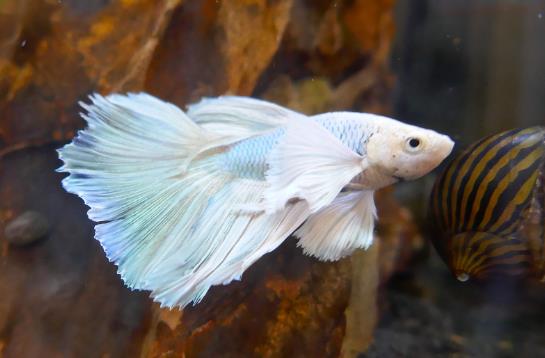Do Betta Fish Float When They Die?
1. Immediately After Death (Sinking Phase)
Betta fish typically sink to the bottom right after dying. This is because their muscles relax, making their body density slightly higher than water. Additionally, the swim bladder loses its ability to regulate buoyancy, which causes the fish to sink.

2. 1-2 Days After Death (Floating Phase)
As bacteria in the body break down tissues, gases such as carbon dioxide and hydrogen sulfide are produced. This causes the fish’s body to gradually bloat, reducing its density until it eventually floats to the surface. If the betta died from oxygen deprivation, disease, or poisoning, it may float more quickly.
3. Special Cases
If a betta dies from severe illness (e.g., dropsy) or organ failure, it may float directly on the water’s surface.
Poor water quality or slow decomposition can delay the floating process.
How to Determine if a Betta Fish Is Dead?
Observe if it remains motionless at the bottom for an extended period, or if its body is stiff and decaying after floating.
Gently touch the fish—if there is no reaction, it is likely dead.
Notes
The sinking and floating of a dead betta is a natural phenomenon. However, you should check for abnormal water quality or temperature to prevent other fish from being affected.
